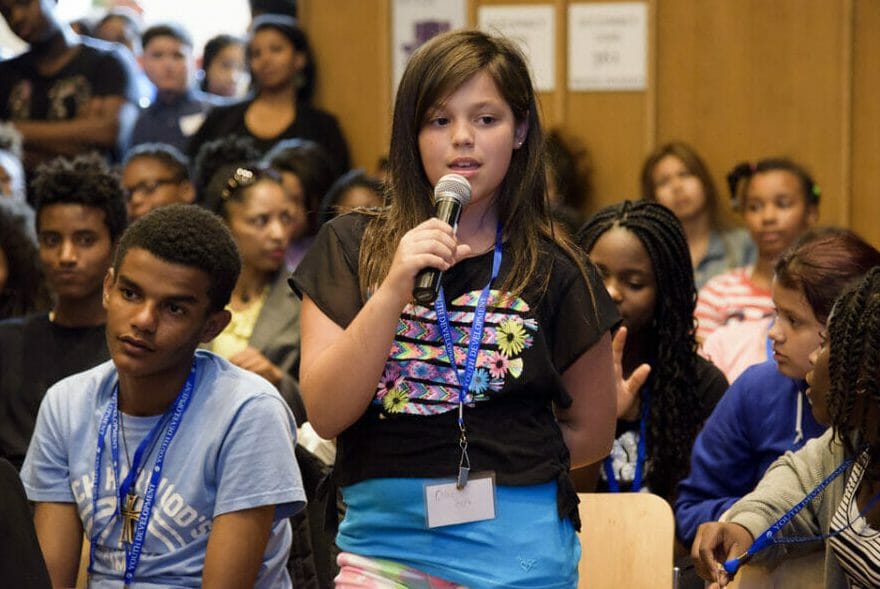 In the Stone Age, survival involved hunting, gathering, finding shelter, keeping a file going and making simple stone tools. Men were men, women were women and kids had to observe and learn from their respective role models how to survive, but it was fairly simple – get food, make sure nothing eats you, that sort of thing.
In the Stone Age, survival involved hunting, gathering, finding shelter, keeping a file going and making simple stone tools. Men were men, women were women and kids had to observe and learn from their respective role models how to survive, but it was fairly simple – get food, make sure nothing eats you, that sort of thing.
From a social point of view, kids did as they were told and stayed out of the way of people who were physically stronger. When they did not, they were beaten, denied food or faced danger on their own.
Over time, life changed quite a bit. Farming, wars, new religions, the industrial revolution, colonization all required the development of new survival skills, but generally speaking, one’s position in life was mainly determined by one’s position at birth – place of birth, social status, financial position and so on. Although stories are told of those who have made great changes, most people lived life pretty much the same as their parents had.
From a social point of view, kids did as they were told and were bound by strict societal rules of politeness, respect and service towards adults and people who were socially stronger.
Nowadays, things are very different. Getting from one place to another, far away, is relatively easy and inexpensive, so even young people can afford to travel and relocate and even kids experience the change created by international or long distance moves.
 Information travels even faster, making its way instantaneously from its origin to the entire world via the Internet. Moreover, whereas older generations had to make serious efforts to get their hands on slightly-outdated information, we now get up-to-the-second information in an overwhelming flow from multiple directions, most of which is unsolicited. If anything, we need to make an effort to shield ourselves from getting too much information and determine what parts of it we can actually trust.
Information travels even faster, making its way instantaneously from its origin to the entire world via the Internet. Moreover, whereas older generations had to make serious efforts to get their hands on slightly-outdated information, we now get up-to-the-second information in an overwhelming flow from multiple directions, most of which is unsolicited. If anything, we need to make an effort to shield ourselves from getting too much information and determine what parts of it we can actually trust.
From a social point of view, kids are now very often on their own. Internet access, free chat programs, free email and free social networking sites allow kids to live within virtual societies their parents may know nothing about. Long commutes, long work hours and the ever-increasing financial pressure also cause many kids to survive on their own in real-world society, having to manage at school, go shopping, choose friends, participate in extra-curricular activities and even work.
Kids’ survival skills in a time like this must be completely different.
So what can you teach your kids that will make their modern life easier?
When you want something, you can fight for it, you can weasel your way to it or you can charm your way to it. It’s best to use charm, but it’s good to know what to do when you can’t
– Gal Baras
What do I mean by this?
Despite what many educational institutions will tell you, the most important skills in life have to do with how you relate to other human beings. If you do it well, you will fit in quickly wherever you go, someone will always watch your back and you will get credible, reliable information and help when you need them. Relationship skills (a.k.a. social skills, emotional intelligence or people skills) are far more important than any technical or academic skills out there.
 So let’s say you want something. Say you want to play with the ball you see in this other kid’s hand right now. What are your options?
So let’s say you want something. Say you want to play with the ball you see in this other kid’s hand right now. What are your options?
Option 1: Fight for it. Grab the ball from the other kid. If he resists, pull harder. If he still resists, punch him in the face until he gives up.
Option 2: Weasel your way to it. Go and tell the other kid the teacher wants him urgently on the other side of school and you are willing to watch the ball for him until he returns.
Option 3: Charm your way to it. Tell the other kid you know this really cool game with a ball that takes two to play and you are willing to show it to him.
OK, so this is a very simplified example, but you get the picture, right?
It is easy to see why Option 1 is very short-lived. 15 seconds into this play, the teacher on yard duty will show up and “arrest” you. End of game. You lose.
Option 2 may last 2 minutes, but you are going to get it when the other kid returns and he will never EVER trust you again. End of game. You lose.
Option 3, however, is very sustainable. While getting what you wanted, the other kid gets something and you get a bonus – someone to play with. This game is long and, as long as you keep it up, you win.
With me so far?
 What I am saying is that many things in life work out just like this. When you take the other people’s interests into account and create a win-win situation, everyone benefits and the “game” continues for a long time.
What I am saying is that many things in life work out just like this. When you take the other people’s interests into account and create a win-win situation, everyone benefits and the “game” continues for a long time.
This is true for being nice to teachers, which gets you good grades and a pleasant time in class. It is true for playing well with friends, which gets you lots of fun times, people to study with and company for sharing your thoughts and feelings. It is also true for contributing to your online networks (while being careful), which makes you popular and lets you know all the good stuff first. It is definitely true for sharing and being considerate to brothers and sisters (and parents), which gets you lots of sharing and consideration right back.
For kids who work, dealing well with managers, peers and customers means praise, promotion, more money, better jobs and many other opportunities.
Being charming is especially beneficial when moving into a new neighborhood, a new school, a new job or a new social network. It does not mean false flattery. It means genuine interest in creating mutual goodness and a good general vibe, which is easy to detect and is very attractive to people.
So when is it best to fight or cheat? When there is a clear conflict and there is no desire to create a relationship with the other person. For example, if someone grabs you in a dark alley, instead of telling them how much you like their large belt buckle, it might be better to kick them in the shin or call out to an imaginary cop behind them and run.
 A more subtle example is bullying. When Eden first started kindergarten in Texas, another girl was pushing her around while she was still learning the ropes. She came home and complained about this to us. After a few days of trying to win her over (option 3), I said, “Fight” (option 1) and Ronit said, “Tell the teacher” (option 2). Eden told the teacher twice, but that did not help, so she gathered all her inner power one day and gave the other girl a serious push back and that was the end of that.
A more subtle example is bullying. When Eden first started kindergarten in Texas, another girl was pushing her around while she was still learning the ropes. She came home and complained about this to us. After a few days of trying to win her over (option 3), I said, “Fight” (option 1) and Ronit said, “Tell the teacher” (option 2). Eden told the teacher twice, but that did not help, so she gathered all her inner power one day and gave the other girl a serious push back and that was the end of that.
Kids who are charmers may end up forgetting their own best interest while trying to please others. This is probably the only pitfall of using charm. It is important to always remind our kids to serve their own interests first and that being genuinely kind and nice to others does not mean lying down to be stepped on.
This year, when Tsoof was planning his birthday party, we suggested that he invite Ethan, the child of our friends who is at the same age. Alas, Tsoof’s other guests were his school buddies and classmates and he knew he would have to spend so much energy hosting Ethan he might enjoy his party less than he could. To his credit, he remembered to put his own best interest at the top of the priority list and said he would not invite Ethan this year.
Anyway, dealing with other people may not always be clear cut, but to summarize:
- The most important survival skills for kids today are people skills. Modern strength is in personal & professional relationships and the ability to interact effectively with other human beings
- Know what you want
- Learn other people’s motivation and interests
- Find a way to get what you want and at the same time helping others get what they want (or at least improve their position)
- When in danger or direct conflict, where only the short term matters and there is no other way, do what it takes to get your way. Fight or “misdirect” if you have to
- Remember what you want and that it is more important than what others want. Use charm to recover from conflicts in your relationships later, but always stand up for your rights
Happy parenting,
Gal











